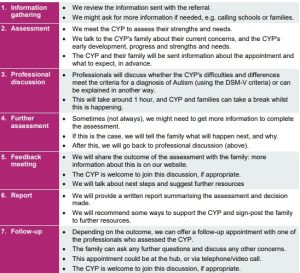Autism Assessment Process
Find out more about the Autism Assessment Process here.
Related content
What is Autism?
Find out about autism and see our fact sheets for more information.
Tribunals
Do you need to go to Tribunal? Find out more here.
Making a referral for an Autism Diagnosis
What is an EHCP? an overview
Early Health Care Needs Assessment Request - BRISTOL
Find the forms you need to make a Needs Assessment Request.
Early Health Care Needs Assessment Request - NORTH SOMERSET
This information refers to requests made in North Somerset only.
Early Health Care Needs Assessment Request - SOUTH GLOS
This information refers to requests made in South Gloucestershire only
